Fresh fruit and veggie slices are a delicious and healthy snack, but some of them really bum me out by turning brown and mushy. This struggle is nothing new, and the internet is full of ways to prevent it, but it’s hard to know which method is worth your precious time, which is why you’re lucky I’m around.
The brown spots that mar an otherwise beautiful piece of fruit is basically “fruit rust”, caused by oxygen in the air reacting with a plant enzyme called “polyphenol oxidase”. This article explains the science in more detail, but to prevent enzymatic browning, you either have to stop the oxygen, enzyme, or both.
Most prevention methods involve a physical barrier (water) and a chemical inhibitor (such as ascorbic acid) but we wanted to see which solutions provided the best solution to this ugly problem.
How We Tested
In order to find the best method for keeping your apples, pears and other easily-oxidised fruit slices looking their freshest, I prepared four different solutions (lemon water, parsley water, honey water and plain water straight from the tap) along with a control (just apple slices in a bowl).
I cut up some fresh apples and placed them in each of the above solutions. After about fifteen minutes, all of the slices except the control, which had several brown spots, were completely white, with no signs of browning. This is all fine and good, but apple slices are of no use to me sitting in bowls of water. To see how long the effect of each solution would last, I took them out of their respective bowls and let them sit in the open air for about an hour.
Lemon Water
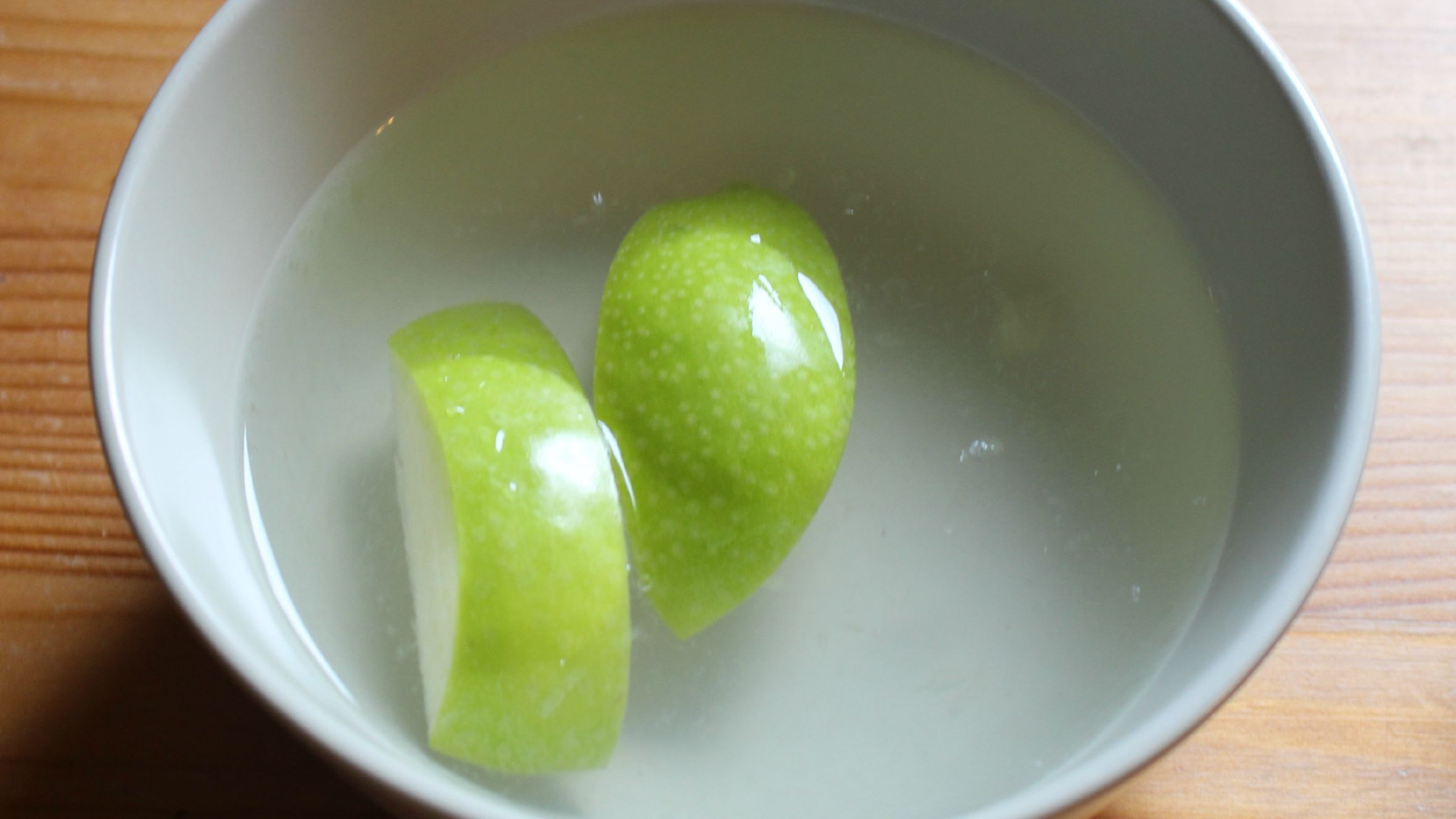
The Theory: Lemon juice has two things going for it here: vitamin C (ascorbic acid) and a low pH. Oxygen reacts with vitamin C before polyphenol oxidase, delaying browning, but once it’s all used up, oxygen gets to work on the fruit enzyme and the flesh begins to brown. Luckily, as long as the environment is acidic enough (a pH of 3) the enzyme is deactivated, and browning cannot occur.
The most sure-fire way to utilise this theory is to coat the apple slices in straight lemon juice, but then your apples will taste like lemons, not apples. The Yummy Life recommends diluting the lemon juice in water (two tablespoons to one cup) and soaking the apple slices in the solution.
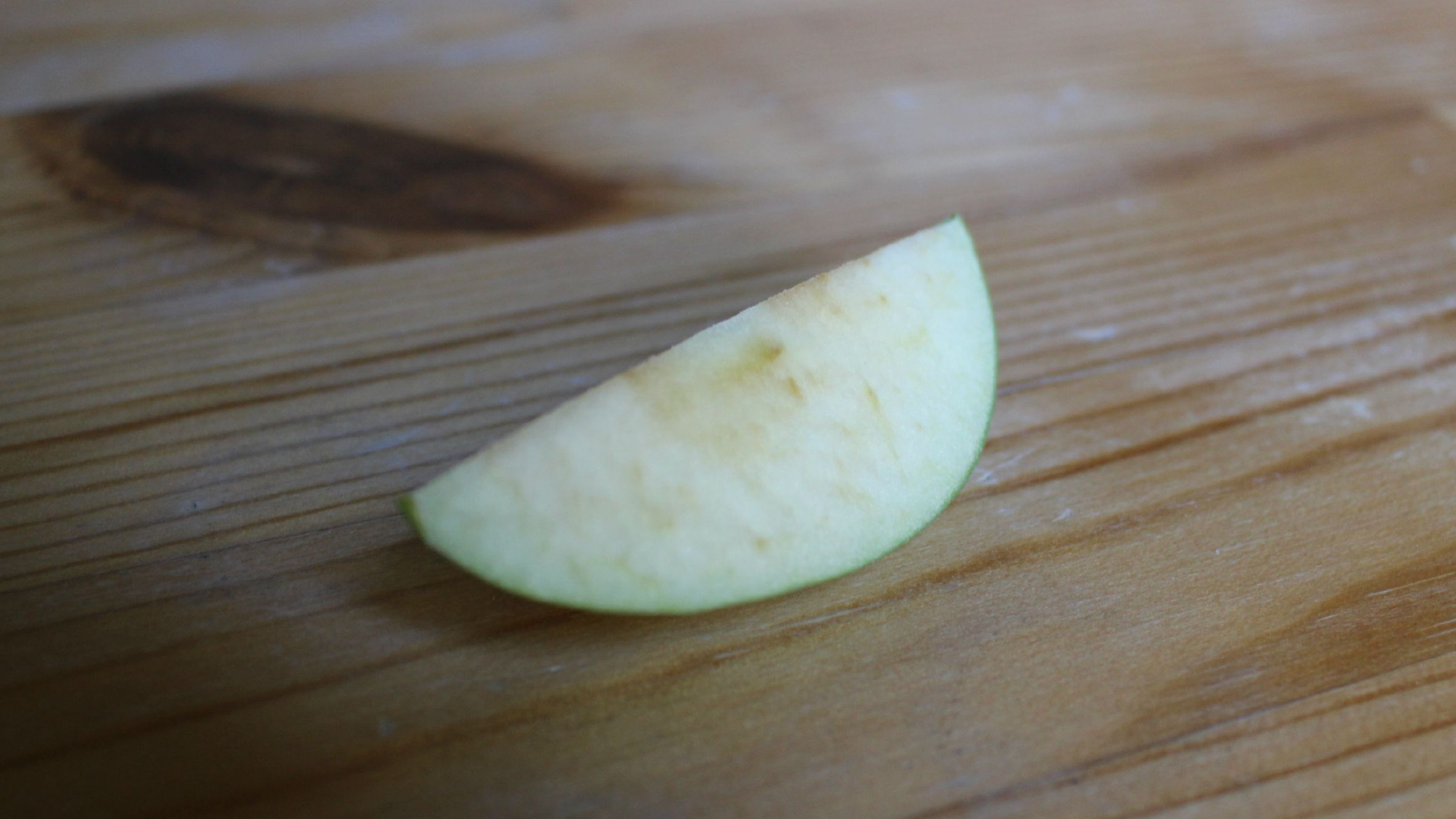
Results: The apples were fine as long as they were submerged in the acidic solution, but after an hour of sitting out on the cutting board, they were almost as brown as the control, leading me to believe that you’re better off using just straight lemon juice or ascorbic acid powder if you wish to go this route.
Parsley Water
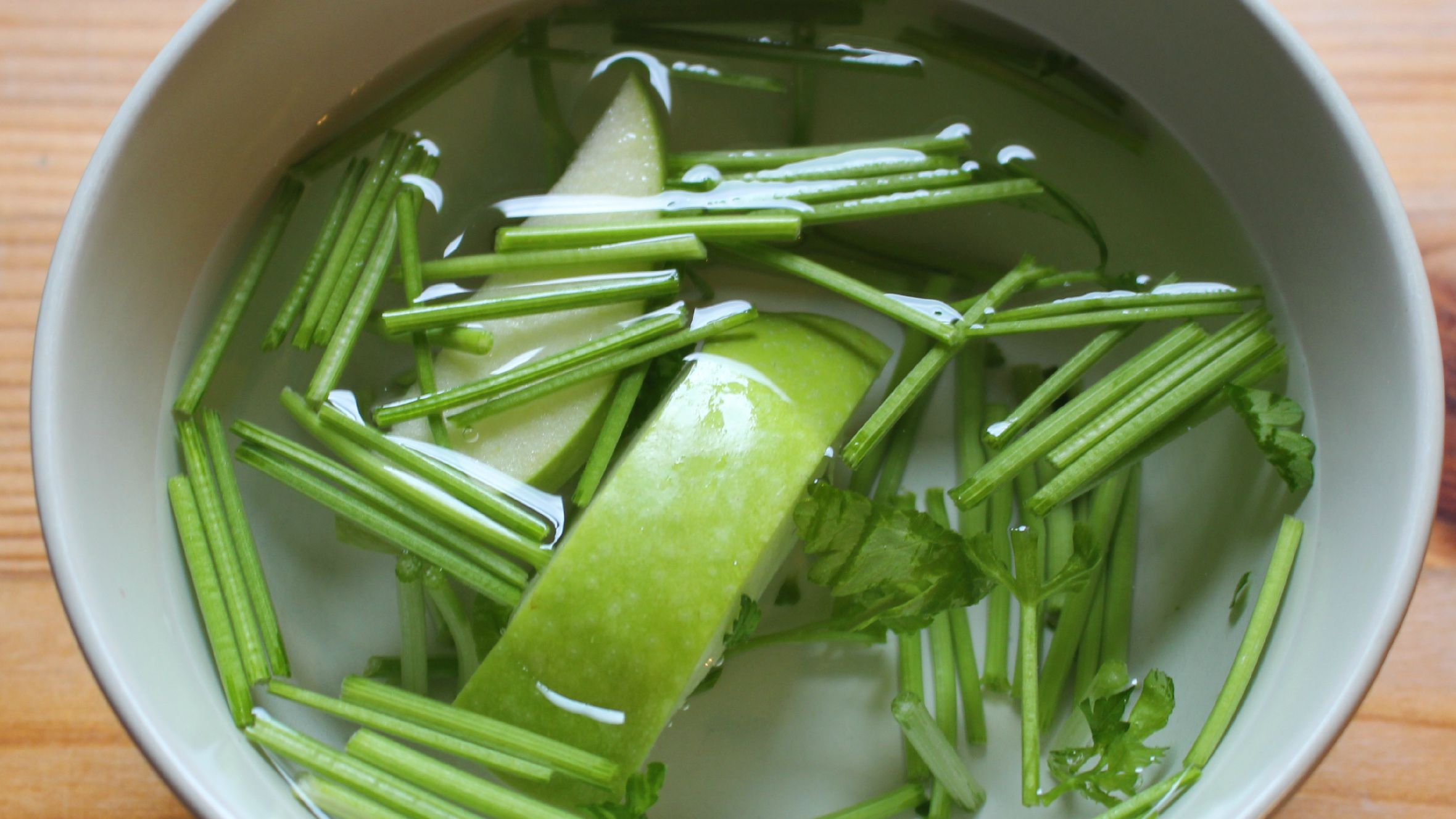
The Theory: Like lemons, parsley is also high in vitamin C, so the above still applies. However, this article from The Kitchn claims that parsley stems work even better than lemons (which is kind of a low bar given the above), though I can’t find anything that would substantiate why that would be, other than the presence of ascorbic acid. (Food writer Harold McGee seems to think the water is doing all the work, but we’ll get to that in a minute.)
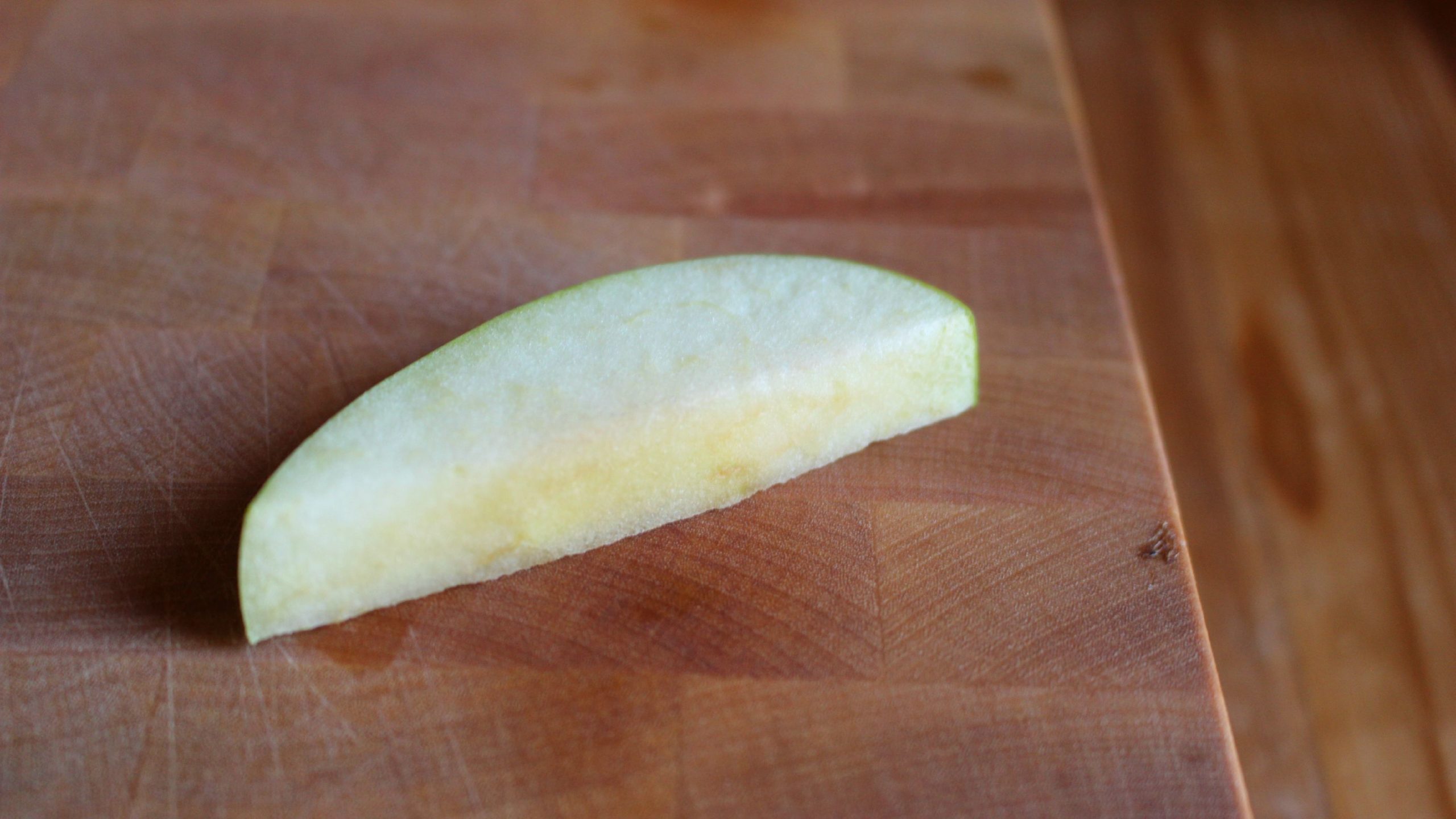
Results: The slices stayed fresh in the solution, but once removed and exposed to air, they begin to brown a little, though no where nearly as badly as the slices that had been in the lemon water. Worth noting however: the apple slices now tasted faintly of parsley.
Plain Water
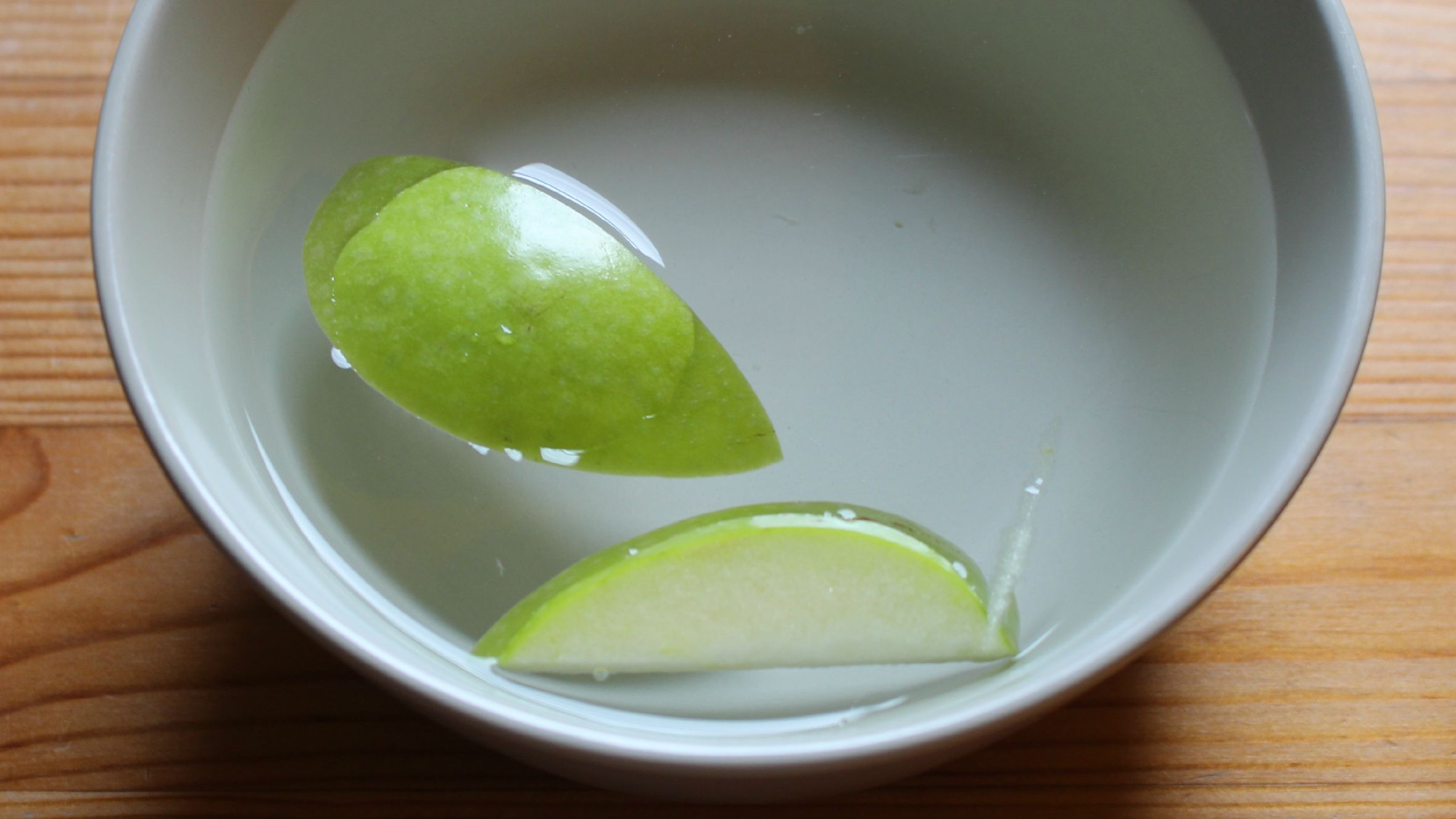
The Theory: As mentioned above, Harold McGee seems to think that the lack of browning has less to with the parsley stems and more to do with the water physically blocking the oxygen from making contact with the flesh:
I’ve heard this use of parsley stems, to keep cut artichokes from browning, from a number of fine cooks in a number of fine restaurants. I did a simple experiment a couple of times: cut artichokes in plain water in one bowl, cut artichokes in water with crushed parsley stems in a second bowl, cut artichokes on a plate. I couldn’t see any difference in the two underwater artichokes, which kept their colour pretty well for an hour or more, much longer than the open-air sample. My conclusion was that water blocks contact with oxygen pretty effectively all by itself, and parsley doesn’t do much.
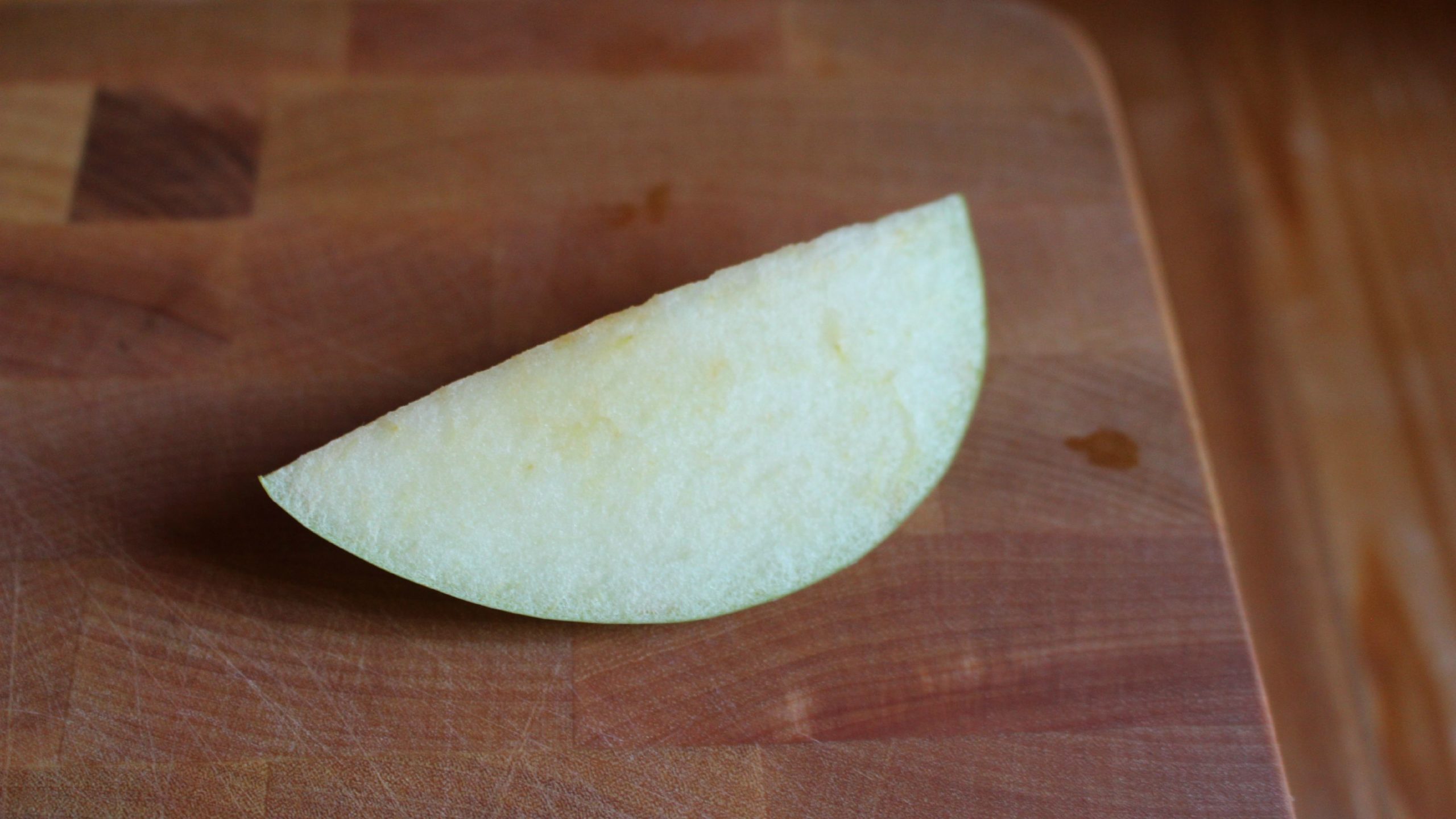
Results: As Mr. McGee predicted, as long as the slices were submerged in water, no browning occurred. What was more interesting, however, was that once they were removed from the water, these slices browned a little bit, but much less than those slices that had been in the lemon water solution.
Honey Water:
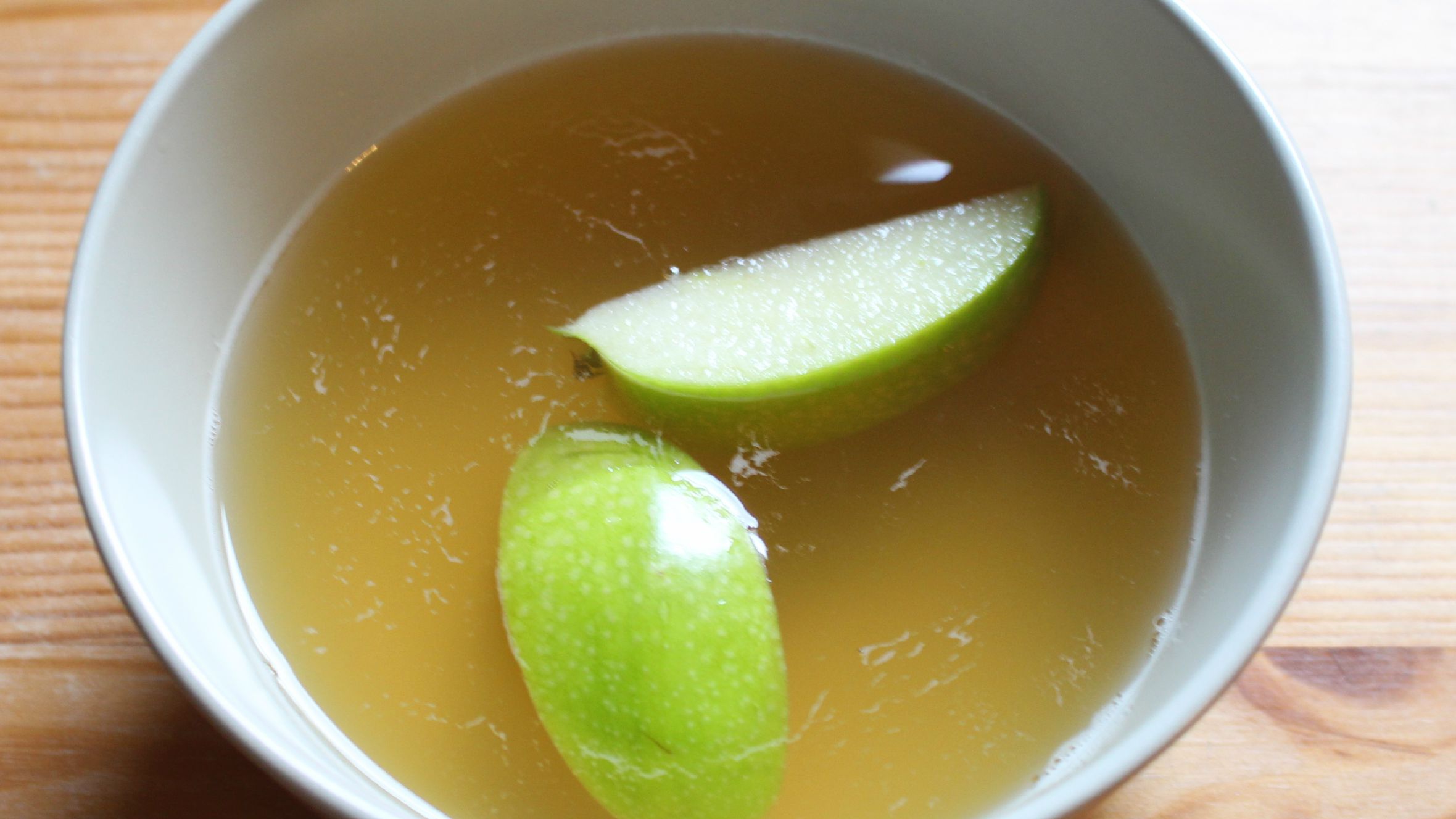
The Theory: According to the below video from America’s Test Kitchen, honey contains a peptide compound that prevents polyphenol oxidase from activating the browning reaction. According to ATK, just thirty seconds of exposure to the honey solution is allegedly enough to keep the apple slices from browning for a full twenty four hours. We’ve covered this method before and many of you reported success with it.
http://lifehacker.com/give-sliced-fr…
Results: An hour after being taken out of the honey solution, the apple slice was still spotless. After three hours however, one brown spot appeared on the slice.
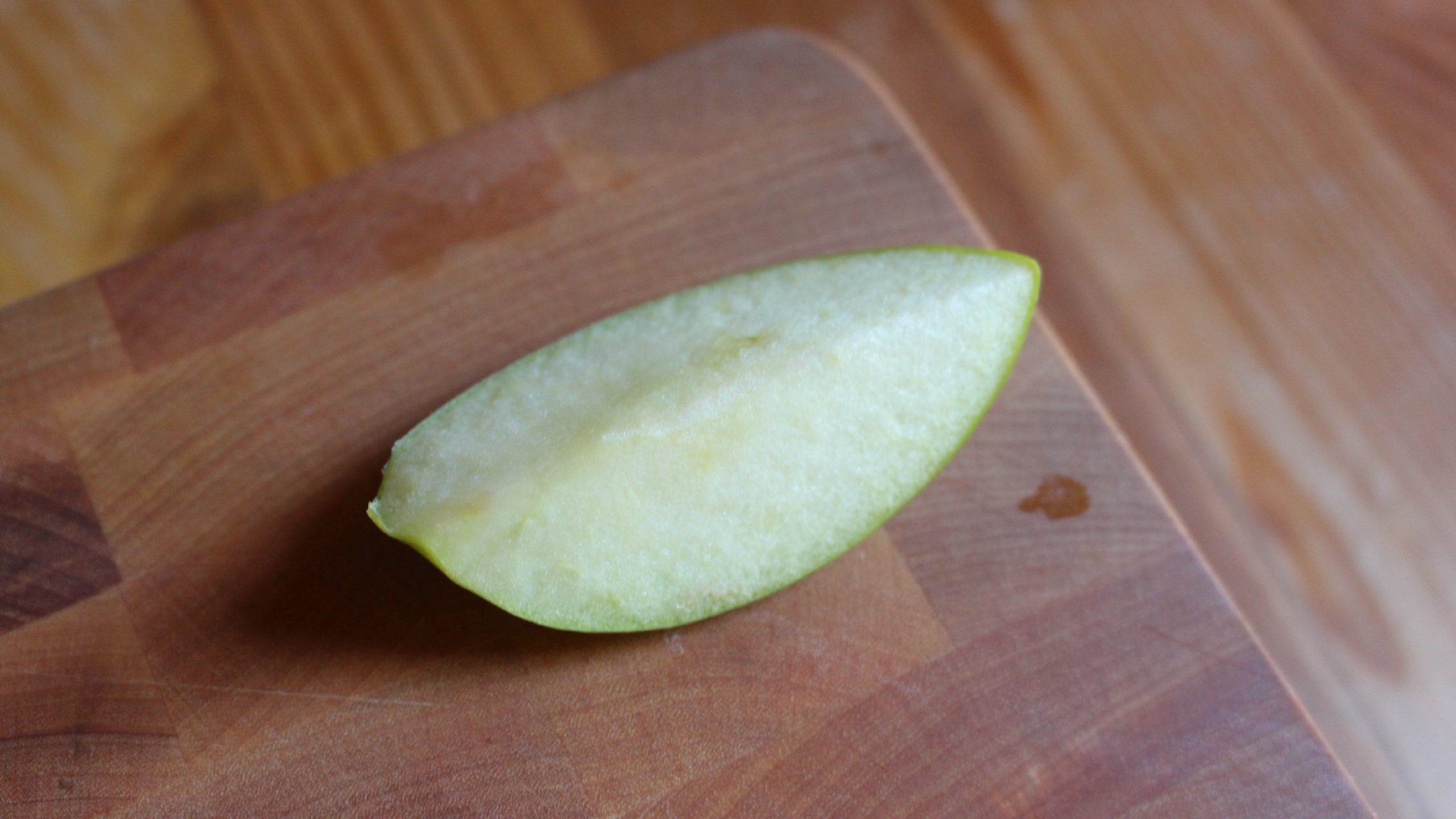
Conclusions
The honey solution was by far the best method for preventing browning on the apples slices, with parsley stems being a close second. (The parsley stems are kind of useless however, unless you want whatever fruit or veg you’re cooking to taste faintly of parsley.) Oddly, the slices soaked in plain water fared better than those soaked in lemon water, which was ultimately as effective as letting the slices sit in the open air.
So use honey, honey and your apples will stay pretty for hours (though not twenty four of them).
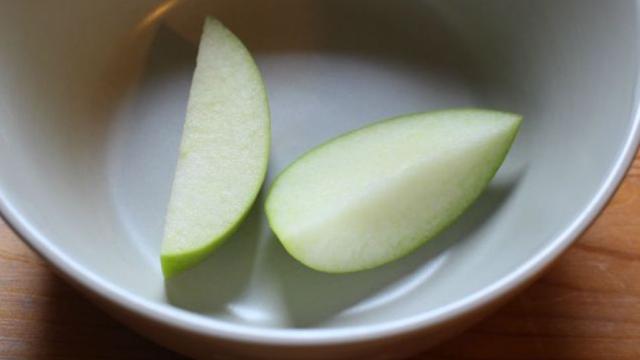
Comments
2 responses to “Tip Tester: The Best Ways To Keep Fruit From Browning”
How much honey?
2 tablespoons to 1 cup according to the video (surely this would make the apple taste like honey?…Must try this at some stage but I feel I would be wasting an awful lot of honey)